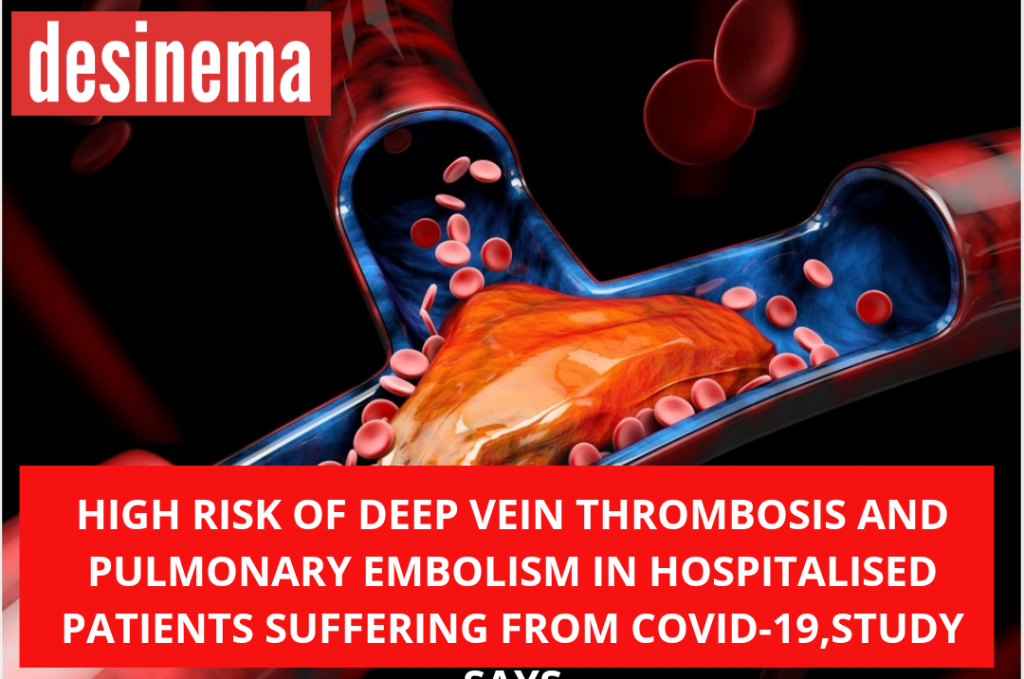There is high risk of deep vein thrombosis and pulmonary embolism in hospitalised patients suffering from Covid-19,study says
Researchers have found a high risk of deep vein thrombosis or venous thromboembolism (VTE) and pulmonary embolism in hospitalised patients suffering from Covid-19.
Deep vein thrombosis is a serious condition that occurs when a blood clot forms in a vein located deep inside your body. This condition is serious because blood clots can loosen and lodge in the lungs. While hospitalised patients at general wards have a VTE risk between five and 11 per cent, the risk of developing deep vein thrombosis or pulmonary embolism in critically ill patients is 18 to 28 per cent, the study, published in the journal Research and Practice in Thrombosis and Haemostasis, reported.
“From the beginning of the Covid-19 pandemic, studies reported an increased rate of thrombosis and pulmonary embolism in patients with Covid-19,”
Cihan Ay, study author, Medical University of Vienna in Austria.
A systematic review & meta-analysis on thrombosis risk in #COVID19. Data reported in single studies is very heterogeneous, as is the quality. Certainly, VTE risk is clearly increased in COVID19. Let´s stop the 2nd wave of clots! @RPTHjournal @thrombosisdayhttps://t.co/YDjRyvNmK6
— Cihan Ay (@Cihan_Ay_MD) September 25, 2020
Being in NYC we were inundated with #COVID19 in early spring we noticed very early the excess risk of thrombosis https://t.co/flNMv8N7vq – and thus started PROTECT – which has now become NIH funded #ACTIV4 – investigating optimal antithrombotic therapy in COVID-19
— Dr. Jeffrey Berger (@PlateletDoc) October 1, 2020
Anticoagulation: Various drugs in this group. Blood clots happen in critical illness but more in COVID-19. Medical terms are deep vein thrombosis and pulmonary embolism. Latter can be fatal. These blood thinning drugs prevent clots forming. We are using them more in COVID. 9/14
— Rupert Pearse (@rupert_pearse) October 4, 2020
For the findings, the research team assessed a total of 5,951 studies published in the field of VTE in Covid-19. Of those, 86 studies were found eligible for inclusion and reported rates of thrombosis and pulmonary embolism in Covid-19 patients. After excluding additional studies due to underlying risk of bias in a structured assessment, 66 studies (28,173 patients) were found eligible to perform a meta-analysis to provide a robust estimate on risk of VTE in Covid-19.
The main findings are as follows: the overall VTE risk in hospitalized patients with Covid-19 is 14 per cent, despite rigorous thromboprophylaxis regimens in most studies. Further, high heterogeneity in VTE rates was found between different patient subgroups. The rate was highest in patients admitted to intensive care units, with 23 percent of patients suffering VTE.
In addition, the exploratory analysis revealed that patients who developed deep vein thrombosis or pulmonary embolism during hospitalization had significantly higher D-dimer concentrations at admission, a laboratory parameter that indicates an activated coagulation system. These findings underscore the strong impact of Covid-19 on the blood-clotting system.



